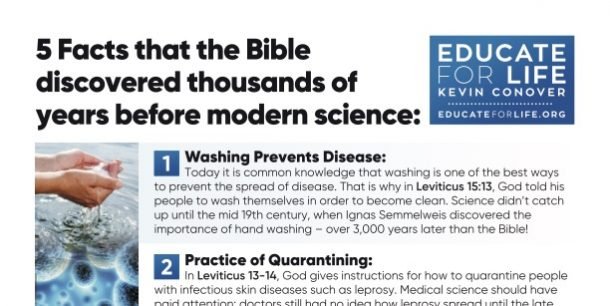by Russell M. Grigg
This article was originally posted on Creation.com.
In the last two issues of Creation magazine we have shown stamps with the biblical themes of ‘The Creation of the World’ and ‘Jonah and the Great Fish’, from Palau. In this issue, the ‘Noah’s Ark’ stamps are from the island nation of St Vincent, in the West Indies.
 The ‘Noah’s Ark’ stamps from the volcanic island of St. Vincent in the eastern Caribbean Sea.
The ‘Noah’s Ark’ stamps from the volcanic island of St. Vincent in the eastern Caribbean Sea.
The artist has depicted the end of the Flood, with Noah’s Ark resting on a mountain under a rainbow,1 and a selection of pairs of various animals, including koalas and kangaroos.
Answers to various objections concerning the Flood—both scientific and practical—that skeptics have raised over the years have been published in many creationist books,2 films/videos,3 and magazines,4 so in this article we shall discuss the reasons why the Flood occurred.
REASONS FOR THE FLOOD
Genesis chapter 6 gives four reasons why God sent the Flood:
1. ‘The wickedness of man was great in the earth’ (v. 5).
2. ‘Every imagination of the thoughts of his heart was only evil continually’ (v. 5).
3. ‘The earth was filled with violence’ (v. 11).
4. ‘The earth…was corrupt; for all flesh had corrupted his way upon the earth’ (v. 12). (All the people on earth had corrupted their way.)
The historical biblical record states, ‘And God looked upon the earth, and, behold, it was corrupt’ (Genesis 6:12). This is in sharp contrast to God’s declaration when he had finished creating the heaven and the earth, namely, ‘And God saw everything that he had made, and behold, it was very good’ (Genesis 1:31). It is astounding to consider that in the tenth generation from Adam the human race had become so wicked, evil, violent and corrupt that it was not fit to go on living. And of all mankind only four men and four women were spared, because they did not go with the great sin drift.
Q: Are these reasons adequate to have warranted the wholesale destruction of the human race?
A: The Bible tells us that mankind was created by God as a special being, made in God’s image, to live according to the rules which God has laid down. When mankind breaks those rules judgment follows. Why? Because God, as a result of His holiness and justice, has decreed to punish the wicked and disobedient. Sometimes this punishment is evident to all in this life, but the ultimate punishment awaits the Day of Judgment. ‘And it is appointed unto men once to die, but after this the judgment’ (Hebrew 9:27). This judgment is described in Revelation 20:11-15. In the case of those living on earth in Noah’s day, God adjudged that their deeds were such as to necessitate the penalty which He imposed.
John Calvin commented, ‘It [the whole earth] was not overwhelmed with a deluge of waters till it had first been immersed in the pollution of wickedness…that wickedness was too deeply seated in their hearts, to leave any hope of repentance.’5
Q: Why were the earth and animals destroyed too?
A: In so far as sin is a transgression of the law, it is guilt; in so far as it is a principle, it is pollution and defilement. Calvin said, ‘The earth was like a wealthy house, well supplied with every kind of provision in abundance and variety. Now, since man has defiled the earth itself with his crimes, and has vilely corrupted all the riches with which it was replenished, the Lord also designed that the monument of his punishment should there be placed: just as if a judge, about to punish a most wicked and nefarious criminal, should, for the sake of greater infamy, command his house to be razed to the foundation. And this all tends to inspire us with a dread of sin; for we may easily infer how great is its atrocity, when the punishment of it is extended even to the brute creation.’6
WHAT OF GOD’S MERCY?
God’s mercy regarding the Flood is just as evident as His judgment, and is seen in the fact that God provided a way of escape for those who were prepared to believe what He had said, heed the warning He gave, and avail themselves of the means of salvation which He provided by instructing Noah to build the Ark (Genesis 6:14-16).
Noah is described as ‘a just man’, ‘perfect in his generations’, who ‘walked with God’,7 and who ‘found grace in the eyes of the Lord’ (Genesis 6:8-9); he was also ‘a preacher of righteousness’ (2 Peter 2:5). From this it is very reasonable to conclude that his messages, perhaps preached from the platform of the partially completed Ark, included warnings of the coming judgment and invitations to his listeners to avail themselves of the one means of escape, which he was constructing. In the event, Noah and his family alone had regard to the wrath of God, and only eight people boarded the Ark in faith and were saved—Noah, his wife, his three sons, and their three wives.
RELEVANCE TO US TODAY
On one occasion Jesus said, ‘As the days of Noah were, so shall also the coming of the Son of man be’ (Matthew 24:37). As we have seen, the days of Noah involved four types of iniquity: great wickedness, evil imaginations, violence and corruption, and these things have all become a way of life in the 1990s. When people are taught from kindergarten to adulthood through every branch of the media and the education system that the world made itself (and thus God is unnecessary or does not exist), and that they are nothing more than evolved animals, it is not surprising that they give themselves over to these sorts of behaviour. As a result, the Ten Commandments have become the ‘ten suggestions’, chastity is regarded as ‘neurotic inhibition’, immorality has become ‘the new morality’, perversion is ‘an alternative life style’, and the only absolute left in society is that there are no absolutes.8
Violence and immorality, rather than being abhorrent in society, have become the subject of entertainment. Some films today portray more than 100 acts of violence per hour. And it seems that few films can be made these days without showing specific acts of adultery or fornication. It has become ‘old-fashioned’ to speak out against this, so it is little wonder that this celluloid action is emulated in real life, as happened when a film dealing with gang violence, called Boyz N the Hood opened in 800 cinemas across the USA in 1991. One man was killed and 20 other moviegoers were shot, stabbed or beaten up in a wave of copy-cat audience violence which erupted in cinemas, drive-ins, and car parks.
CONCLUSION
The warnings given to Noah’s generation are terrifyingly relevant today. When God’s mercy is rejected, then His judgment must and will fall. But, as in the days of Noah, so now God has both given warning of the judgment to come and provided a way of salvation. The Ark was the only refuge from divine judgment then and it had to be entered by faith. As such it speaks to us of the Lord Jesus Christ, the only Saviour for sinful mankind today, whose death on the Cross must be appropriated by faith. ‘For by grace are ye saved through faith’ (Ephesians 2:8); ‘Neither is there salvation in any other; for there is none other name under heaven given among men, whereby we must be saved’ (Acts 4:12). As the Apostle Paul declares, ‘I declare unto you the Gospel…By which also ye are saved…how that Christ died for our sins according to the scriptures; And that he was buried, and that He rose again the third day’ (1 Corinthians 15: 1-4).
REFERENCES AND FOOTNOTES
1. The stamps show some artistic licence—the rainbow should have red on the outside and blue (actually violet) on the inside, and the Ark shown is the traditional shape, whereas it was most likely to have been rectangular.
2. E.g. John C. Whitcomb, The World That Perished , Baker Book House, Grand Rapids, Michigan, Revised Edition, 1988. Ken Ham, Andrew Snelling, Carl Wieland, The Answers Book, Chapter 7, ‘Noah’s Flood: Where Did the Water Go?’; Chapter 12, ‘How Did Various Animals Get from the Ark to Isolated Places such as Australia?’, Creation Science Foundation, Brisbane, 1990, pp. 117-129, and 197-207.
3. E.g. The World That Perished , Films for Christ, Mesa, Arizona.
4. E.g. ‘Does Scripture Require a Global Flood?’ Creation magazine, March-May 1995, Vol. 17, No. 2, p.37. ‘Amazing “Ark” Exposé’: Could this be Noah’s Ark?’, Creation magazine, September-November 1992, Vol. 14, No. 4, pp. 26-38. ‘The Pitch for Noah’s Ark’, Creationmagazine, August 1984, Vol. 7 No. 1, p. 20. ‘Diseases on the Ark’, Creation Ex Nihilo Technical Journal , 1994, Vol. 8:1, pp. 16-17. ‘Safety Investigation of Noah’s Ark in a Seaway’, Creation Ex Nihilo Technical Journal , 1994, Vol. 8:1, pp. 26-36.
5. John Calvin, A Commentary on Genesis , The Banner of Truth Trust, Edinburgh, 1965, p. 217.
6. Ref. 5, p. 250.
7. It is worth noting that Noah’s great grandfather, Enoch, is also described as a person who ‘walked with God’ (Genesis 5:22, 24). Noah is thus seen as the descendant of a godly line of ancestors who reared their children in the knowledge and fear of God.
8. From McCarthy,T.J., The Plain Man’s Guide to Newagespeak.


Trackbacks/Pingbacks